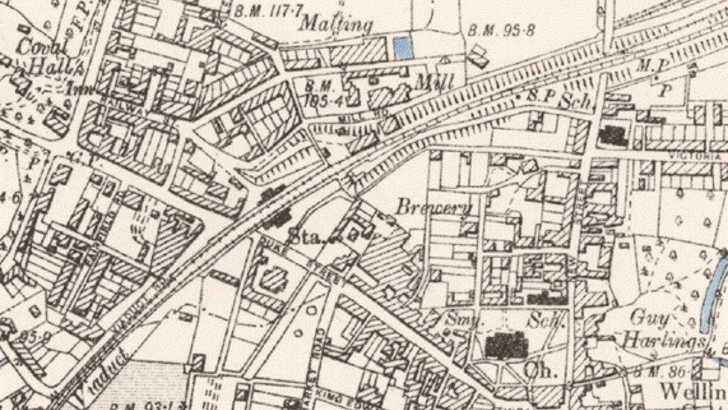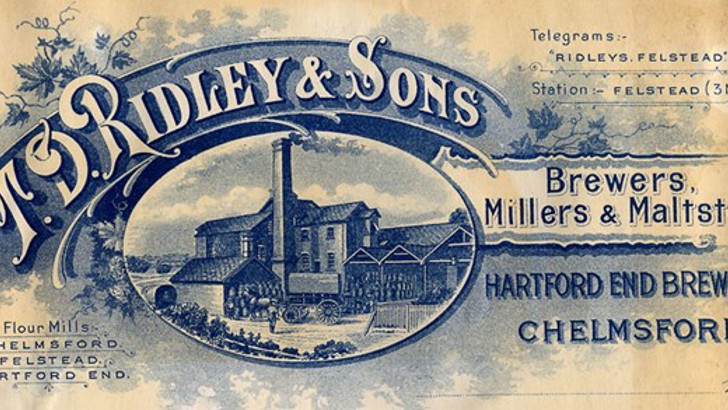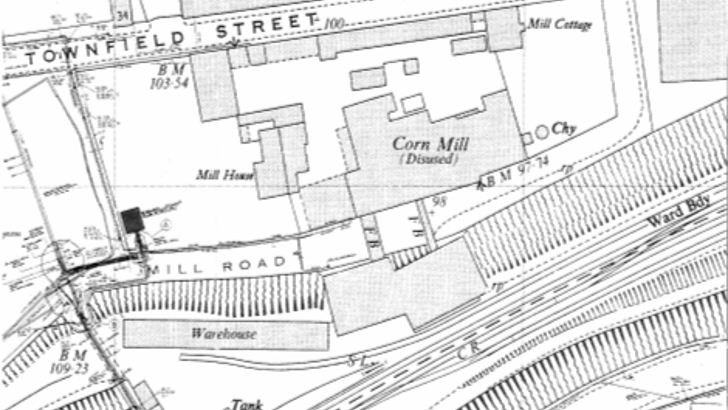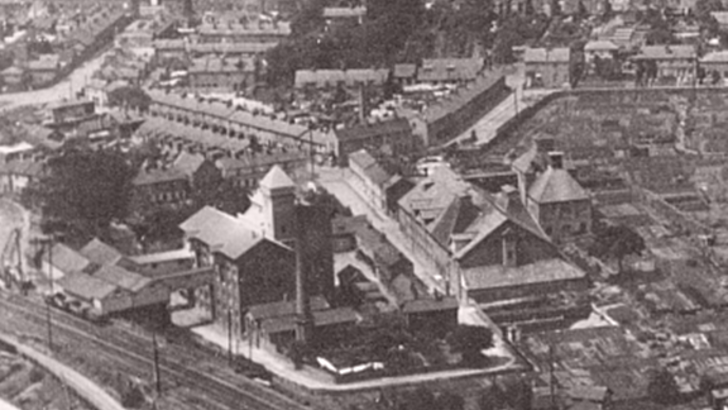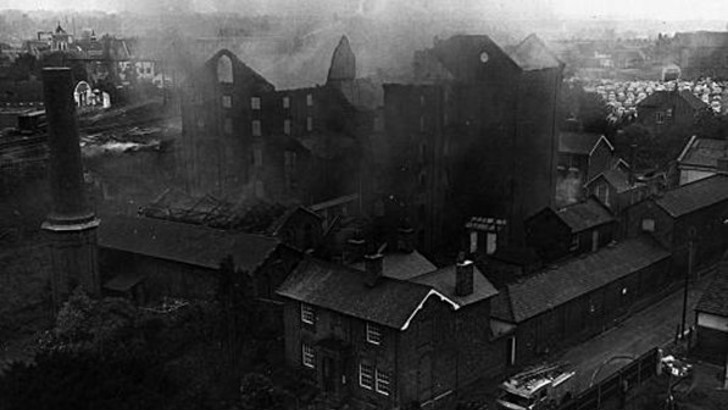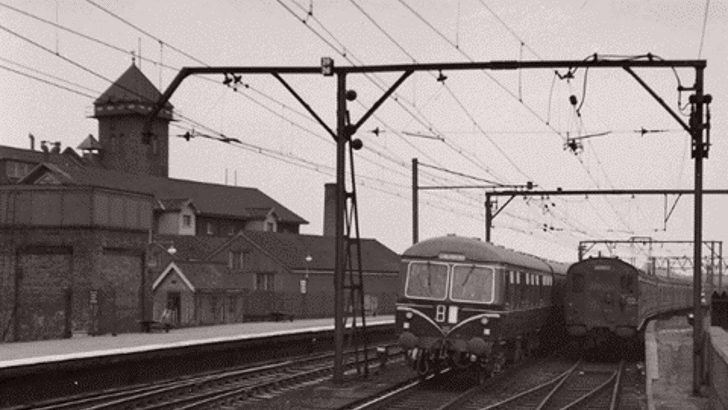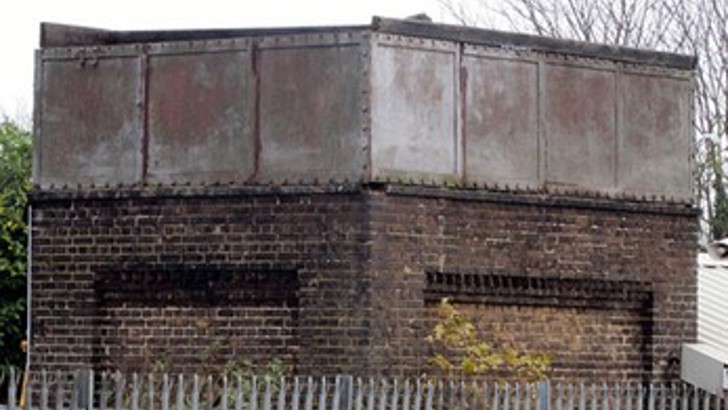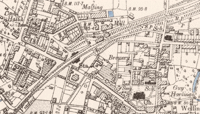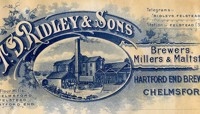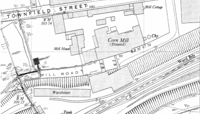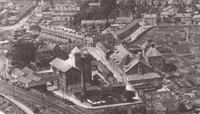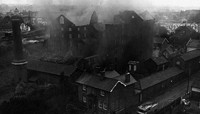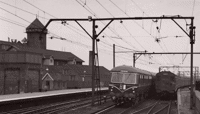Mill Yard
Location of board
Mill Yard Square, Chelmsford
Introduction
The Great Eastern Counties Railway, linking Chelmsford with London and Norwich, was opened on 29 March 1843. As the first 6,000 miles of steam railway track to be laid anywhere worldwide, Eastern England’s main line railways are amongst the oldest in the world.
The railway provided Chelmsford with a direct link to London and the Midlands, allowing raw materials to be brought in and products transported. This was one of the reasons Chelmsford developed as an industrial centre.
The railway allowed the town to flourish, as special industry developed close to the railway line with private sidings for access. Hoffman's, Marriage's and Marconi all relocated to be close to the railway, as well as Ridley's, which housed a steam malting and flour mill between Townfield Street and Mill Road.
T. D. Ridley and Sons
In 1841, Thomas Dixon Ridley (1814 to 1882) took over the family business as the owner of Hartford End Mill and within a year built his own brewery on the banks of the River Chelmer, downstream from the mill.
As well as the water mill and brewery at Hartford End, the company developed into a flour milling and malting business in Chelmsford, with one of the maltings being located off Townfield Street and Mill Road next to the railway sidings.
By 1882, the year of Thomas’ death, the company had established a chain of 71 tied houses ranging from Saffron Walden to Rettendon. By 1906, the business had become a limited company and almost 100 years later in 2005 was bought by Greene King for £45.6 million.
Whilst operations at Hartford End have closed, Ridley's Old Bob continues to be produced by Greene King at Bury St Edmund's.
Ridley's Mill
The original malting building was erected in 1875 and was a yellow, brick-built, four storey building owned by T. D. Ridley and Sons. It was situated between Townfield Street and Mill Lane and was a prominent landmark in Chelmsford’s West End given its scale and height.
The building had the steeping pit and drying floors to the east, paired kilns in the centre and a malt store beyond. A separate barley store was added in 1912 and this housed the cleaning and screening machines and a kiln for drying barley stood at its east end.
Internally, the floors were supported on cast iron columns and the kilns were heated by anthracite burners. The Mill was also connected to the railways sidings via two bridges from the upper floors of the building.
Ridley's Mill spectacularly burnt down in 1969 and the site has now been redeveloped. Mill Square is a gateway to the city centre, and connects the railway station to Anglia Ruskin University and New Street.
Water Tower
Another important aspect of the social history of the railways includes the Great Eastern Railway steam locomotive water tower that has been located next to the station since 1882. The tower forms part of the Mill Sidings and warehouse buildings which were demolished in 2013. The water tank has a space underneath which was used as stabling for the station shunting horse. The water tower has recently been dismantled and transported to the Essex Anglian Railway Museum (EARM) at Chappel as part of the renovation works at Mill Yard.
In 2019, the 1882 Great Eastern Railway water tower will be completely rebuilt at the EARM to the original pattern, and will replace the modern water supply system in order to give the museum a more authentic character. The space underneath the water tank will be replicated and any deficiencies in bricks for the reconstruction will be made up of bricks salvaged from the recent demolition of the Retort House at Marks Tey Station. The floor of the stable will also be constructed using stone setts retrieved from another demolished railway building at Stratford.
Conclusion
Chelmsford developed as an important industrial centre and commuter town since the arrival of the railway in 1843. This is one of the reasons that industry developed around the railway line and private sidings. Ridley’s Flour Mill was an example of that and was an important landmark in this location. In commemoration of this history, the gateway that now connects the Station to the University has been named Mill Square.

